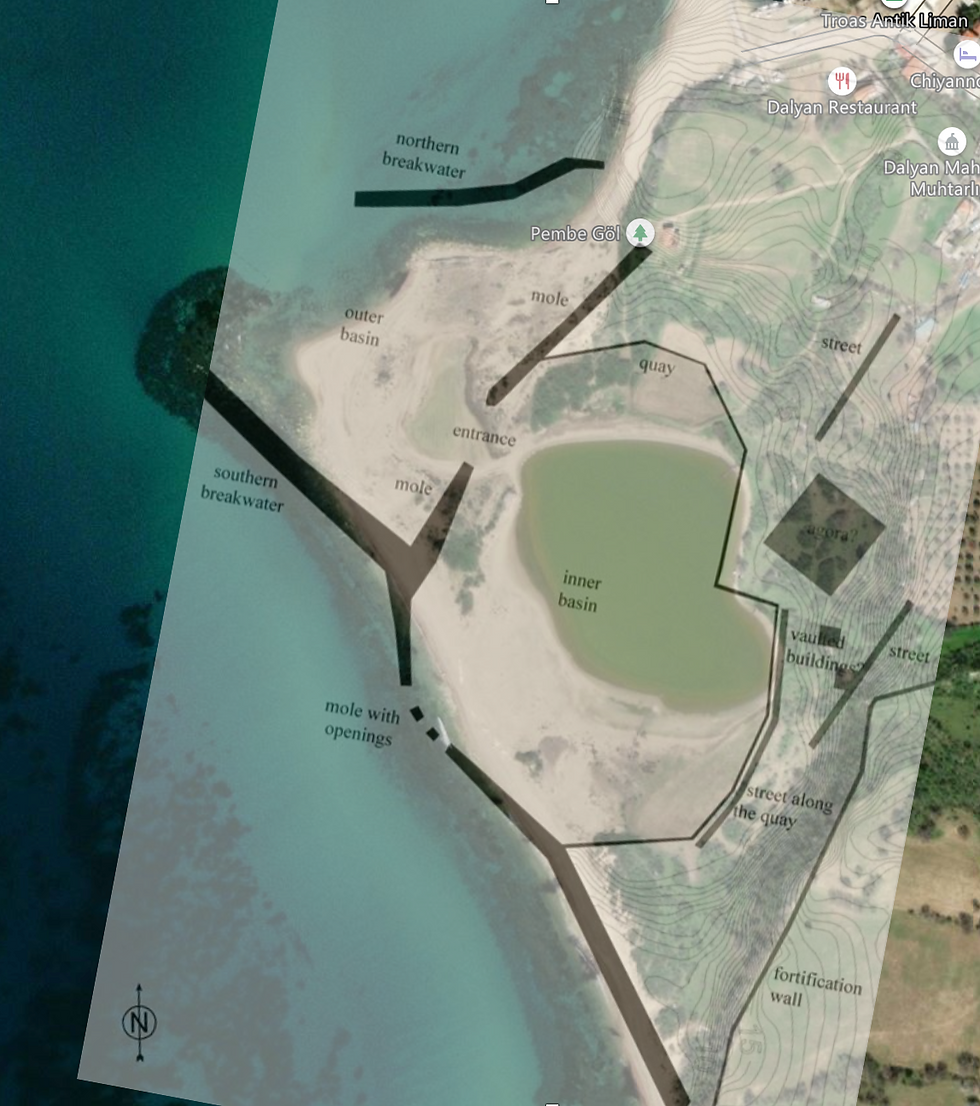The city of Alexandria Troas was like a comet dashing through history—it appeared as a bright flash in an instant, then disappeared. The city was founded by Antigonus in the Hellenistic era (3C BCE). When you visit the historical site today, you will find only a few remains on the desolate hilltop. Despite its late start and then abandonment, Alexandria Troas almost became the center of the Roman empire on three separate occasions. Julius Caesar, Augustus, and Constantine—perhaps the three most famous Roman emperors—each considered moving the imperial capital from Rome to Troas. (Constantine obviously chose another site called Byzantium and named it after himself.)

Why did this city that had little history and that eventually fell into oblivion almost become the center of the Roman empire? This answer is simple—its strategic location.
The peninsula in northwest Turkey, “The Troad” (Biga Yarımadası), lies at the intersection of two important travel routes, so it was a strategic travel node. The east-west land route connecting Anatolia and Macedonia crosses through the Troad. Equally important, the Troad frames the narrow strait connecting the Aegean Sea with the Black Sea, called Hellespont (Dardanelles, Çanakkale Boğazı). In the summer months, both the sea and the wind flow southward. Boats cannot sail northward through the straits, so they must wait out the summer somewhere along the Troad. In antiquity, there was always an important harbor city along the Troad: Troy (Bronze Age), Assos (Hellenistic period), and Alexandria (Roman imperial era).
There are no natural deep-water harbors along the Troad coast, but Rome needed one for its imperial transport network. In 12 BCE Alexandria became a Roman colony and Caesar Augustus constructed an artificial harbor for commercial and military purposes. The harbor flourished in the 2C CE as a major port, especially for exporting granite and marble from the inland quarries.
The harbor grew less important in the 4C as Byzantium became the imperial center. Then Justinian constructed a large granary for storing wheat on the neighboring island of Tenedos. So from the 6C, the harbor of Alexandria faded (or, more accurately, silted in).
The harbor had inner and outer basins, separated by an extant mole wall. The breakwaters are visible in the sea. Several marble columns, perhaps brought to the harbor to export, remain around the site. Though large, the Troas harbor was average size during the Roman empire. The full site survey was published in Stefan Feuser (“The Roman Harbour of Alexandria Troas, Turkey’” International Journal of Nautical Archaeology 40, no. 2 (2011): 256–73, https://doi.org/10.1111/j.1095-9270.2010.00294.x ). The image below is a Google Maps image of the site overlaid with Feuser’s proposed schema.

Today the harbor can be easily visited (location here). From the village of Dalyan/Ezine, follow the sandy coastline south for 300 meters. The outbanks have silted in, turning the inner basin into a small, reddish lake. The local municipality has posted new signage around the lake.


Yorumlar